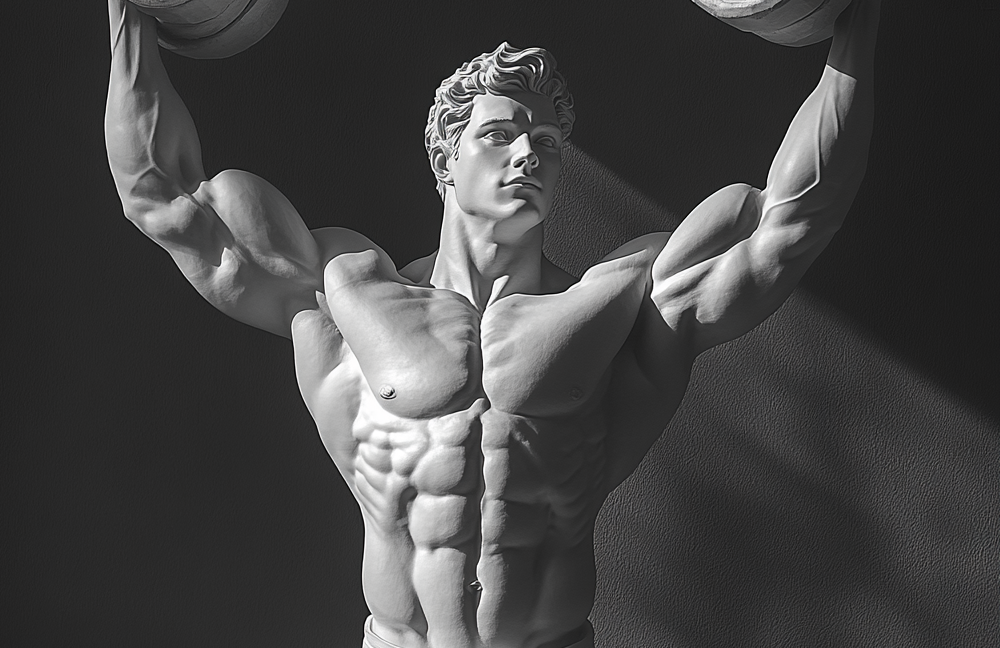Starting Your Fitness Journey
Starting your fitness journey can feel overwhelming, but with the right approach, it doesn’t have to be. This beginner fitness blueprint is designed to guide you step by step, helping you build a strong foundation for success. Whether your goal is to lose weight, gain strength, or simply feel healthier, a structured plan can make all the difference.
With the right mindset, tailored workouts, and sustainable habits, you can set yourself up for long-term results. This guide will give you the tools to define your goals, create a balanced routine, and stay motivated. The first step is often the hardest, but it’s also the most important. Let’s get started!
1. Define Your Fitness Goals
Setting clear and specific fitness goals is the first step in creating a successful workout plan. Goals provide direction, motivation, and a way to measure progress, helping you stay focused as you begin your journey. For beginners, it’s essential to start with realistic and achievable objectives that align with your personal aspirations, whether that’s losing weight, building muscle, or improving overall health.
To make your goals effective, try using the SMART framework: they should be Specific, Measurable, Achievable, Relevant, and Time-bound. For example, instead of saying, “I want to get in shape,” a SMART goal would be, “I want to lose 10 pounds in three months by exercising three times a week and eating a balanced diet.” Setting goals like this gives you a clear path to follow and keeps you accountable.
Remember, your goals should reflect what truly matters to you, not what others expect. By focusing on small, manageable steps, you’ll build confidence and create a foundation for long-term success. Keep revisiting your goals to ensure they remain motivating and adapt them as you grow in your fitness journey.
2. Assess Your Starting Point
Before diving into a fitness routine, it’s important to understand where you’re starting. Assessing your current fitness level provides a baseline that helps you track progress and tailor your plan to your needs. Without this step, it’s easy to set unrealistic expectations or overlook areas that need extra focus.
Begin by evaluating key aspects of your fitness, such as your weight, body measurements, and general activity level. You can also perform simple fitness tests to gauge your current strength and endurance, like counting how many push-ups or squats you can do or timing how long you can hold a plank. These benchmarks will serve as reference points to measure your improvements over time.
Self-awareness is crucial at this stage. Be honest about your habits, including diet, activity levels, and sleep patterns. Understanding these factors will help you identify areas that need change. Remember, everyone starts somewhere, and the goal isn’t perfection – it’s progress. By assessing your starting point, you’re building a solid foundation for a fitness plan that works for you.
3. Build a Beginner-Friendly Workout Plan
Creating a beginner-friendly workout plan is essential to ease into fitness without overwhelming yourself. The key is to start with a balanced routine that focuses on consistency rather than intensity, gradually building your strength, endurance, and confidence.
A good beginner workout plan should include three key components: strength training, cardio, and flexibility exercises. Strength training helps build muscle and boosts your metabolism. Start with bodyweight exercises like squats, push-ups, and planks, which are simple yet effective for beginners. Cardio, such as brisk walking, cycling, or light jogging, improves your heart health and burns calories. Aim for at least 20–30 minutes of cardio two to three times a week. Flexibility and mobility exercises, like yoga or stretching, are also important to improve your range of motion and prevent injuries.
We have a great beginner workout in our free workout database. The same workout is also readily available in our AI-powered Blaze Workout app. Go check it out if you are serious about starting your fitness journey!
Begin with a schedule that works for you, such as three to four workout days per week, with rest days in between to recover. For example, you might do strength training on Monday and Thursday, cardio on Tuesday and Saturday, and take Wednesday and Sunday as rest or active recovery days. Keep your sessions short – 20 to 40 minutes is plenty when starting out.
| Exercise | Reps and Sets | Suggestions |
|---|---|---|
Bench Dips | 3 sets to exhaustion | As a beginner, start the dips without any additional weight. If you feel comfortable doing more than 10 reps, add some weight by placing a plate on your thighs. |
Squat w/o Weights | 3 sets of 12 reps | Start without any weights, just using your body weight. Once you are comfortable with the movement, use dumbbells or a barbell for a more advanced workout. |
Lat Pulldown | 3 sets of 8 reps | The latest pulldown is one of the most popular exercise for beginners. Machines are available in a majority of gyms and the movement ist straightforward. |
Lunges with Dumbbells | 3 sets of 8 reps | This exercise is a good addition to squats because it ensures that both legs are exposed to the same weight. It allows you to subsequently balance uneven strength distribution. |
Bench Press with Dumbbells | 3 sets of 8 reps | Bench press is available in all kinds of variations. For beginners, the dumbbell version is a good choice. You can vary the exercise by adjusting the bench position from inclined to flat to declined. |
Planks | 3 sets of 30 seconds | A foundational exercise to build core strength. Core strength will help you in many other compound exercises such as squats. |
The most important part of any workout plan is sticking to it. Set a consistent workout time each day and track your progress to stay motivated. Remember, it’s better to start small and build momentum than to overdo it and risk burnout. Your beginner-friendly workout plan is the first step toward creating a sustainable fitness routine.
4. Master the Basics of Nutrition
Nutrition is the cornerstone of any successful fitness journey. For beginners, mastering the basics of nutrition means understanding how to fuel your body to support your goals, whether that’s building muscle, losing fat, or simply feeling healthier. The good news? It doesn’t have to be complicated.
Start by focusing on whole, nutrient-dense foods that provide the energy and nutrients your body needs. Prioritize lean proteins, such as chicken, fish, eggs, tofu, or legumes, as they help build and repair muscle. Include complex carbohydrates like brown rice, quinoa, oats, and sweet potatoes for sustained energy, and round out your meals with healthy fats from sources like avocados, nuts, seeds, and olive oil. Don’t forget plenty of vegetables for fiber, vitamins, and minerals to support overall health.
Portion control is key, especially if weight loss is part of your goal. Learn to recognize appropriate serving sizes and avoid overeating by tuning in to your hunger and fullness cues. If muscle gain is your focus, aim to eat slightly more calories than you burn, prioritizing protein and complex carbs to support growth.


Hydration is just as important as food. Drinking enough water—at least 2–3 liters per day—helps with energy levels, digestion, and workout performance. Avoid sugary drinks and excessive processed foods, which can lead to energy crashes and hinder progress.
By focusing on these foundational principles of nutrition, you’ll set yourself up for long-term success. Start small by making gradual changes to your eating habits, and remember that consistency is more important than perfection. Over time, these basic habits will become the building blocks of a healthier, stronger you.
5. Establish Sustainable Habits
Building a fitness routine that lasts begins with creating sustainable habits. Quick fixes or extreme efforts may produce short-term results, but they’re rarely effective in the long run. Instead, focus on small, consistent actions that fit into your lifestyle and are easy to maintain over time.
Start by setting a regular workout schedule that works with your daily routine. Whether it’s exercising in the morning, during lunch breaks, or in the evening, consistency is key. Make fitness a non-negotiable part of your day by treating it like any other important appointment. Over time, it will become second nature.
Incorporate habits that support your fitness goals beyond exercise. Prioritize sleep by aiming for 7–9 hours per night to help your body recover and perform its best. Plan your meals in advance to avoid unhealthy, last-minute choices and ensure you’re fueling your body with the right nutrients. Drinking enough water throughout the day is another simple yet powerful habit to adopt.
Progress may feel slow at first, but don’t underestimate the power of small steps. Focus on one or two habits at a time, such as drinking an extra glass of water daily or adding a short walk after meals. As these become second nature, you can layer on additional changes.
The key to sustainability is finding what works for you and being patient with yourself. Fitness isn’t about being perfect – it’s about being consistent. By creating habits that are realistic and enjoyable, you’ll build a foundation for long-term success that supports your fitness journey and overall well-being.
6. Stay Motivated and Overcome Challenges
Staying motivated is one of the biggest hurdles in any fitness journey, especially for beginners. The initial excitement may fade, and obstacles like busy schedules, plateaus, or self-doubt can make it tempting to give up. The key to success lies in finding strategies to keep your motivation high and addressing challenges head-on.
One of the most effective ways to stay motivated is to celebrate small wins. Each milestone, whether it’s completing a week of workouts or noticing increased strength, is a step forward. Acknowledge these achievements and use them as reminders of your progress. Rewards—like new workout gear or a relaxing massage – can also serve as incentives to keep going.
Finding support is another powerful motivator. Whether it’s a workout buddy, a fitness class, or an online community, sharing your journey with others provides encouragement and accountability. Having someone to cheer you on or keep you company during workouts can make the experience more enjoyable and less intimidating.
Challenges are inevitable, but they’re also opportunities to learn and grow. If you’re struggling with time, focus on short, efficient workouts like HIIT or active breaks throughout the day. When faced with a plateau, shake up your routine by adding new exercises, increasing intensity, or reevaluating your diet. Remember, setbacks are normal – it’s how you respond that matters.
Most importantly, reconnect with your “why.” Why did you start this journey? Whether it’s to feel stronger, improve your health, or gain confidence, keeping your goals in mind can help you push through tough times. Fitness is a long-term commitment, and by staying motivated and tackling challenges with a positive mindset, you’ll build resilience and set yourself up for lasting success.
7. Track Progress and Adjust
Tracking your progress is a vital part of any fitness journey. It helps you see how far you’ve come, identify what’s working, and make adjustments to keep moving toward your goals. Without regular tracking, it’s easy to lose focus or feel like your efforts aren’t paying off. By monitoring your progress and staying adaptable, you’ll stay motivated and on the path to success.


Start by choosing a few key metrics to track based on your goals. If weight loss is your focus, monitor your weight, body measurements, and how your clothes fit. For muscle building, track your strength by recording the weights, sets, and reps you complete in each workout. Progress photos can also be a powerful visual reminder of your transformation over time.
Consistency is key when it comes to tracking. Set a regular schedule for assessing your progress, such as every two weeks or once a month. This prevents you from becoming overly fixated on day-to-day fluctuations, which are natural and often unrelated to actual progress. Keep a fitness journal or use apps to log your workouts, meals, and other relevant data.
As you track, be prepared to adjust your plan if needed. If you’ve hit a plateau (this article provides tactics to overcome a plateau), consider tweaking your workout intensity, adding variety to your routine, or reassessing your nutrition. Sometimes small changes, like increasing weights or modifying your caloric intake, can reignite progress. Adjustments aren’t a sign of failure – they’re a sign that you’re learning what works best for your body.
Remember, fitness is a journey, not a destination. Tracking your progress and making adjustments ensures that you stay aligned with your goals and continue to grow. Celebrate your wins, learn from challenges, and keep refining your approach to create a sustainable, effective fitness routine.
Conclusion: Take the First Step Today
Starting your fitness journey can feel daunting, but with this beginner fitness blueprint, you have everything you need to succeed. From setting clear goals to building a beginner-friendly workout plan, mastering basic nutrition, and tracking your progress, every step brings you closer to a healthier, stronger you. The journey may not always be easy, but it’s worth it. Depending on your body type, also check out dedicated guides for mesomorph, endomorph, or ectomorph body types.
Remember, fitness is a long-term commitment, and consistency matters more than perfection. Begin with small, sustainable changes and focus on building habits that support your goals. Celebrate every milestone, stay motivated through challenges, and adjust your plan as you grow.
The most important step is the first one. Don’t wait for the perfect time or ideal conditions – start today. Your future self will thank you for taking action now. With the beginner fitness blueprint as your guide, you’re ready to begin transforming your health and unlocking your full potential. The journey starts here!







